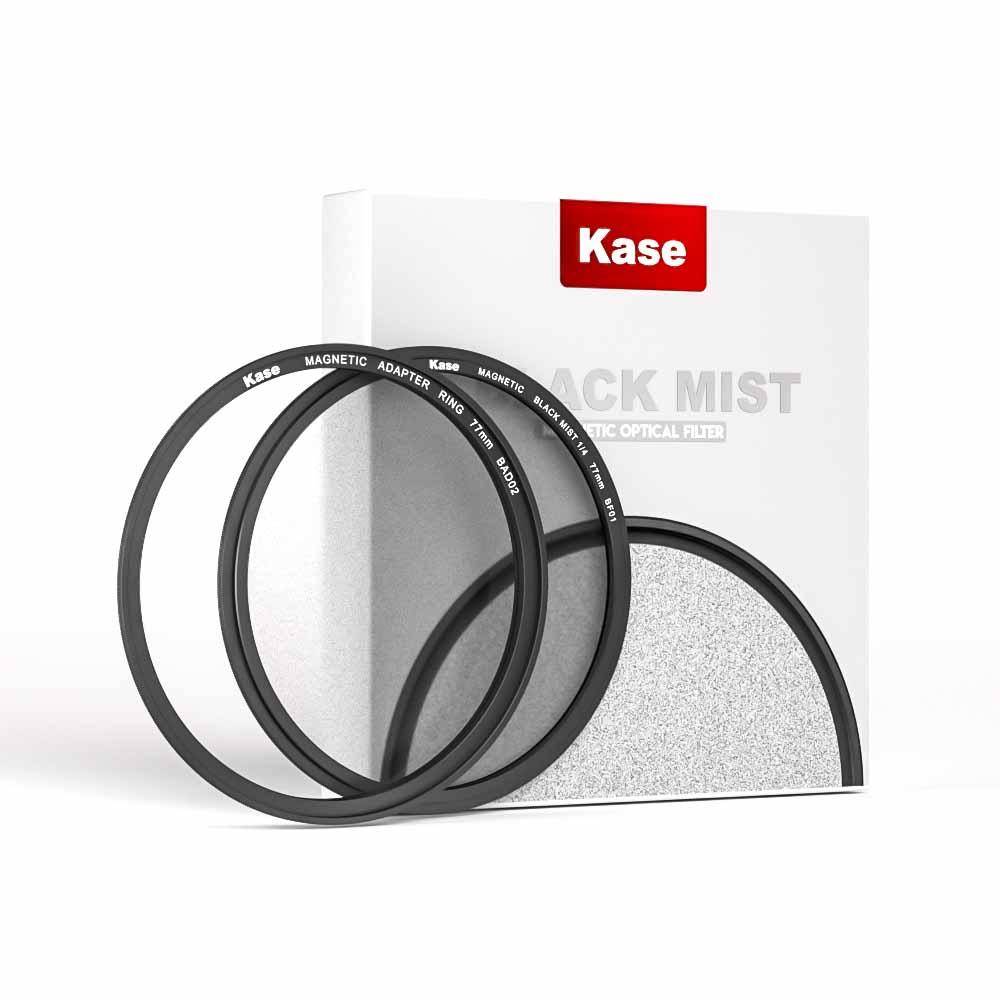
Screw-in circular lens filters
Screw-in circular filters are the most commonly used type of camera lens filters in photography. These filters are very simple to use: they can be screwed directly onto the front of the camera lens without requiring any tools. Screw-in filters come in various sizes to match the different lens sizes. You can still attach one filter to a lens of different sizes using an adapter ring. If you plan to use a circular filter for multiple lenses, get the filter size to match the biggest lens and simply use the adapter ring for others.
Note: Some wide-angle lenses may experience compatibility issues, such as vignetting when using certain sizes of screw-in filters or combining several screw-in filters.
Square and rectangular camera filters
Square and rectangular filters are used with filter holder systems. The main advantage of this camera lens filter type is the precise control of the filter placement and effect. Square and rectangular filters are compatible with a wide range of lenses, being an adaptable filtration system. Additionally, these filters minimise the risk of vignetting, even with wide-angle lenses. The only drawback of square and rectangular filters is that they are bulkier and less portable compared to screw-in filters.
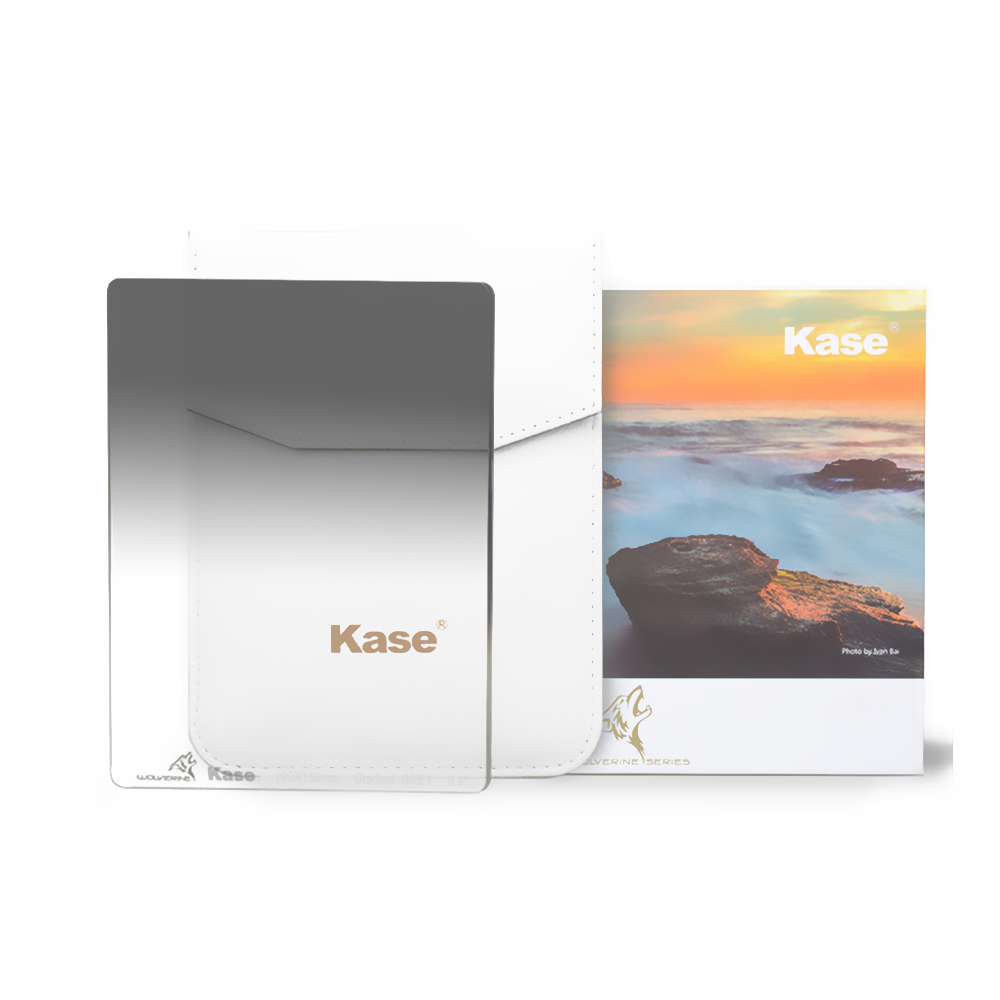
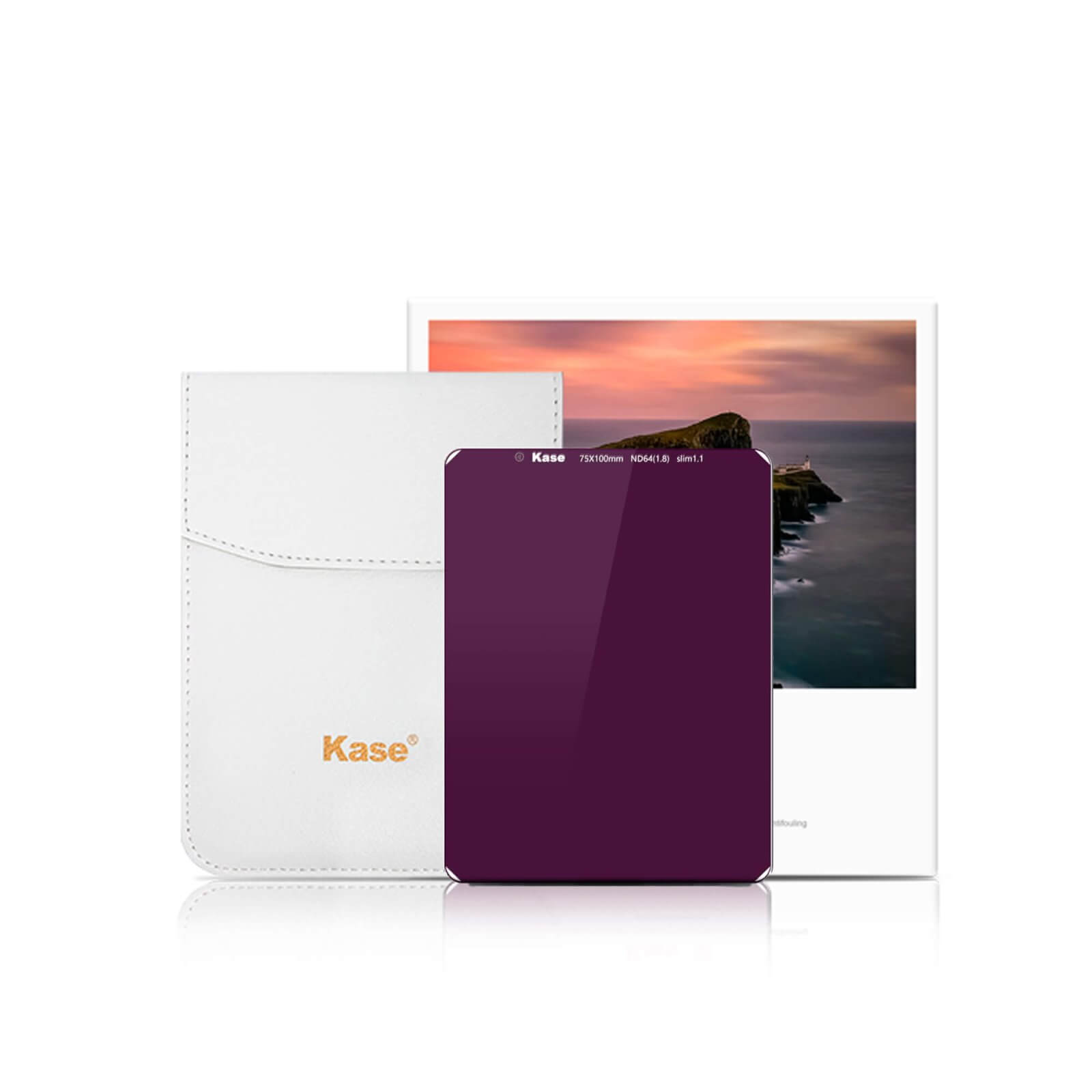
Slim square filters for camera lens
Slim square filters, also referred to as thin square filters, are designed with a thinner profile compared to standard square filters. They are almost two times lighter than the standard square filters. These filters are specifically crafted to minimise the risk of vignetting, particularly when used with wide-angle lenses. Slim square filters offer high-quality optical performance with minimal distortion, which makes them an ideal choice for photographers who prioritise image quality. Despite their thinner profile, they maintain compatibility with numerous filter holder systems.
Clip-in lens filters
Clip-in filters are a type of lens filter that is designed to be inserted directly into the camera body, typically behind the lens mount. These filters are commonly found in mirrorless interchangeable lens cameras and some DSLR models that have a removable filter holder. To attach you don’t need any additional adapters or tools, just be sure to do it carefully so as not to damage the sensor. Clip-in filters don’t impose the risk of vignetting, as they sit behind the lens and do not obstruct the optical path.
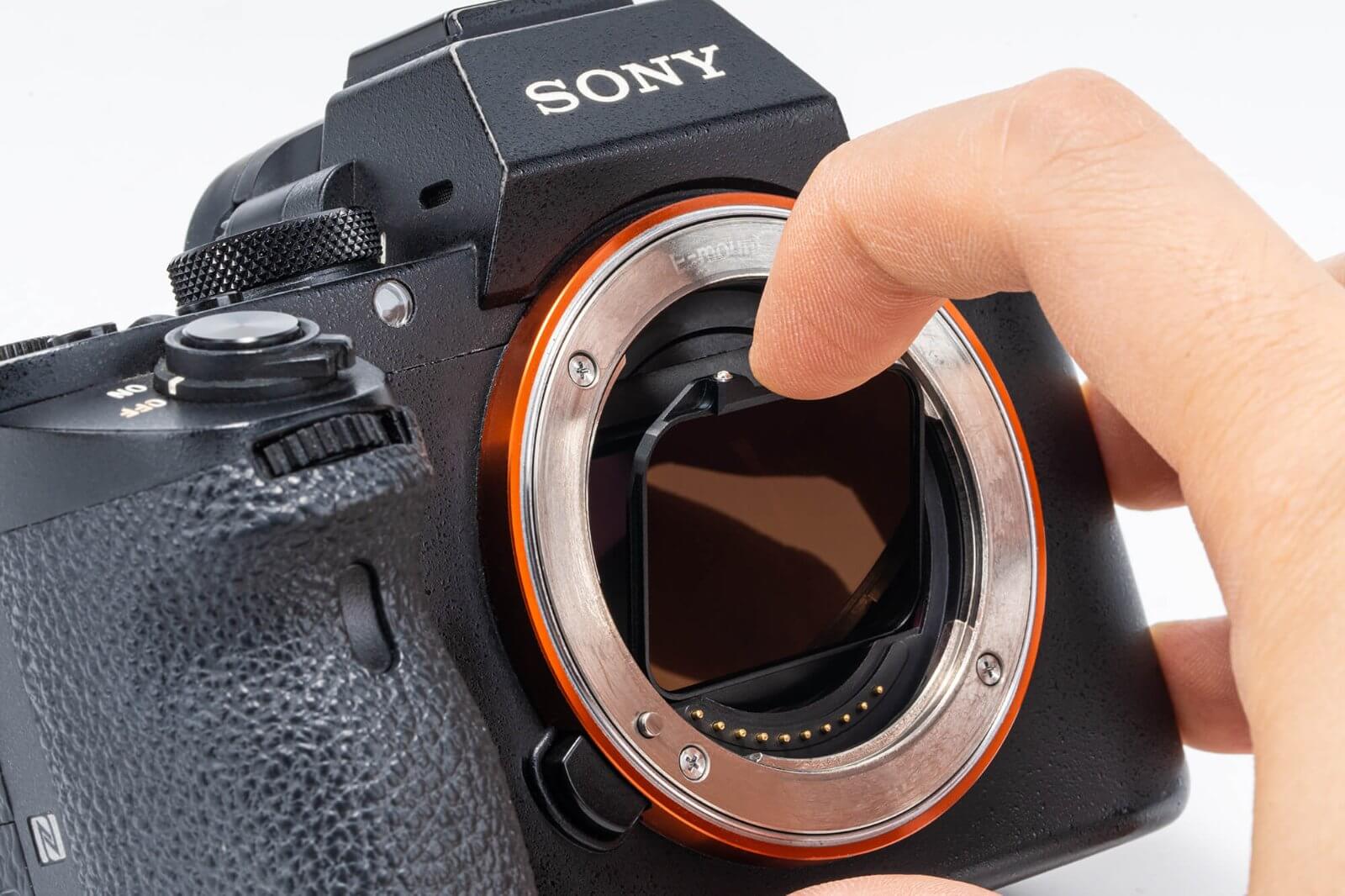
Different types of camera lens filters
With so many filters available on the market, it can be overwhelming to understand what you need and why. In this guide, we will cover the main types of camera lens filters that every photographer should know about.
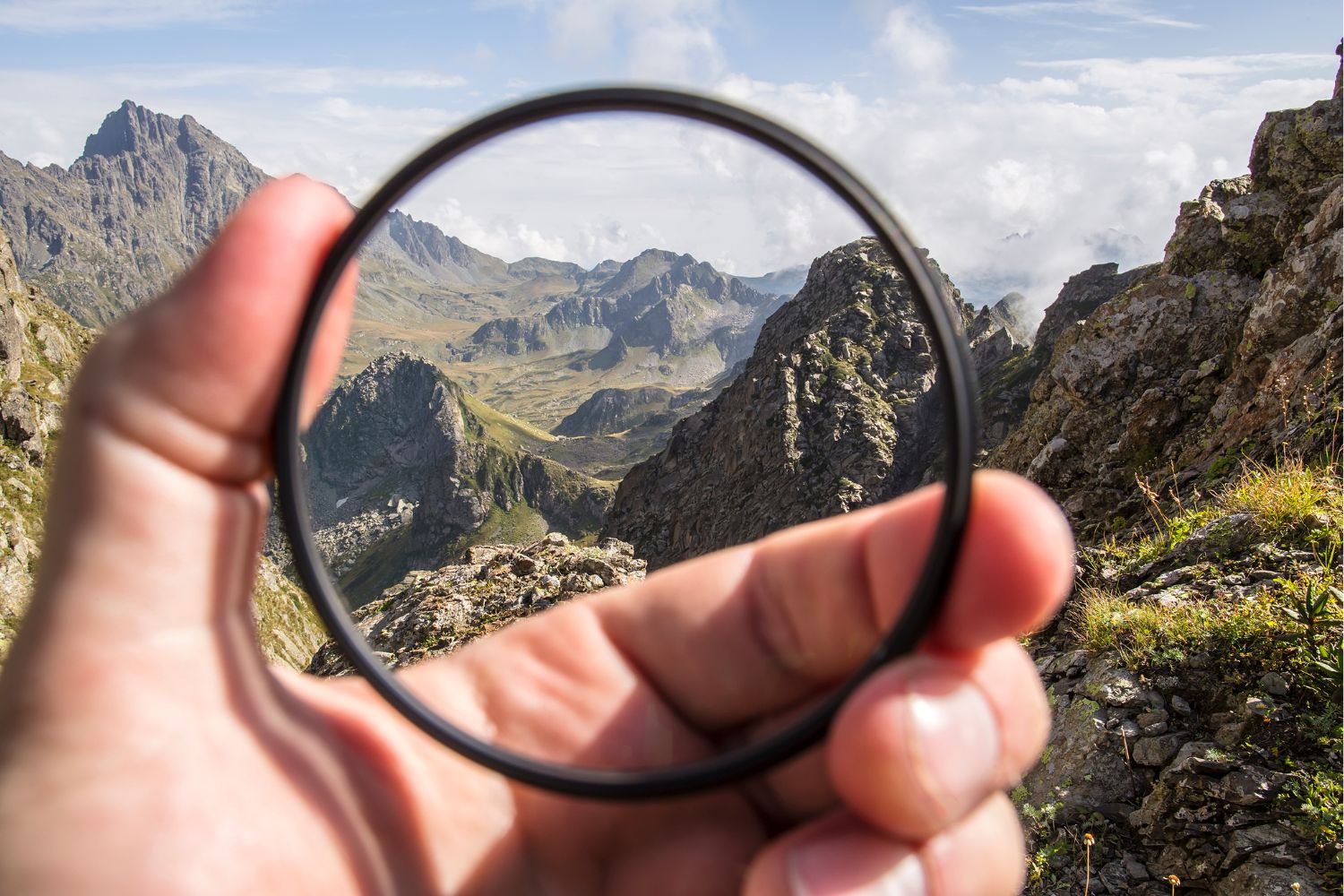
UV protection filters
UV filters are probably the type of filter that every photographer has. They are primarily used to protect your camera lens from dust, moisture, and scratches, especially when shooting in outdoor environments. In the past, UV filters were used to limit the UV light coming to the camera lens, but modern camera lenses have less sensitive sensors and there is no particular need for it. Nowadays, they are used as always-on filters whenever other filters are not placed on the lens to guarantee its protection.
Important: cheap plastic UV filters may degrade the image quality, so choose the ones made of high-definition optical glass.
Thus, we highly recommend getting one in your tool to protect your camera lens, because in case of scratches, replacing it won’t be as heartbreaking as replacing the expensive lens.
When to use: when you need to protect the camera lens and don’t use any other filter at the moment.
Discover Kase UV filtersRead the FAQ on UV filters
Polarising filters
Polarising filters are indispensable tools for reducing glare and reflections from non-metallic surfaces such as water, glass or foliage. When light reflects off surfaces, it becomes polarised, and the polarising filter blocks this polarised light removing unwanted reflections. Polarising filters can be rotated, allowing you to adjust the angle of polarisation and achieve the desired effect.
Additionally, polarising filters are effective for enhancing the blues of the sky and green colours and improving overall image contrast. This type of camera lens filter is particularly handy when shooting landscapes, outdoor portraits, or architectural photography, where reflections affect image clarity and colour saturation.
Note: polarising filters darken the image by 3 stops, take it into account when shooting.
When to use: for outdoor photography, to remove undesired reflections and enhance colours.
Discover Kase polarising filtersRead the FAQ on CPL filters
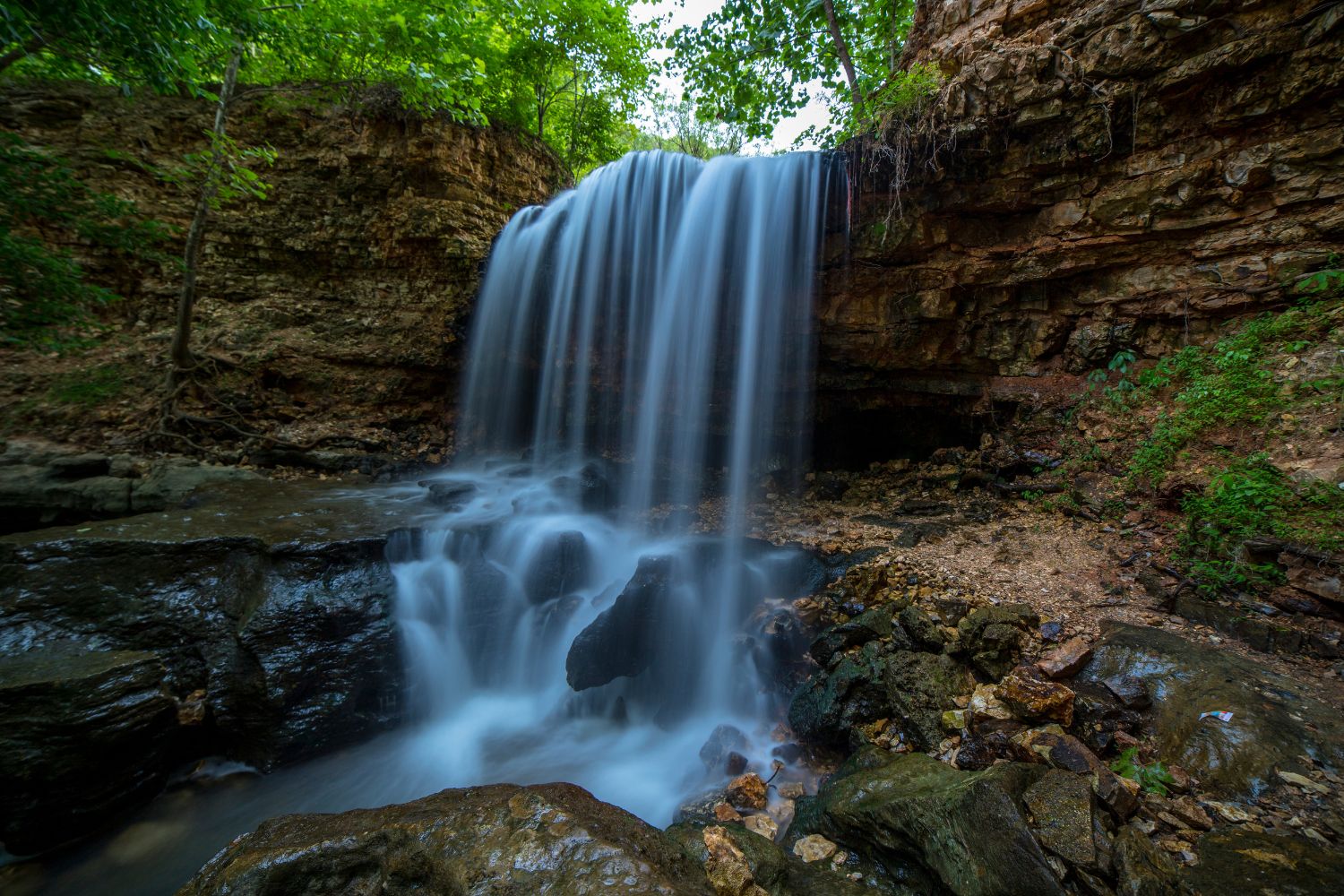
Neutral density lens filters
Neutral density (ND) filters are invaluable for controlling exposure settings in bright lighting conditions, allowing photographers to achieve longer exposure times or wider apertures without overexposing the image. As the name suggests, these filters do not alter the image colours. ND filters come in different strengths allowing to reduce the light reaching the camera sensor by a specific number of f-stops. Also, there are variable ND filters that allow regulating by how many f-stops you reduce the incoming light.
Note: you will need to adjust the settings to have a proper exposure.
They are commonly used in landscape photography to blur motion in waterfalls or rivers, capture long-exposure cityscapes, or achieve shallow depth of field in bright outdoor conditions. Additionally, ND filters are essential for achieving balanced exposure in situations where the dynamic range exceeds the camera's capabilities, such as during sunrise or sunset photography. It doesn’t make sense to use them indoors, but ND filters can be used for creative effects in portrait or night photography.
When to use: in bright outdoor conditions.
Discover Kase ND filtersRead the FAQ on ND filters
Graduated neutral density filters
Graduated neutral density (GND) filters have a gradient that transitions from transparent to grey across the glass. They are commonly used in landscape photography to darken the brighter areas of the image, such as the sky, while maintaining proper exposure in the darker areas, such as the foreground. GND filters are particularly useful for capturing dramatic sunrise or sunset scenes, where the sky is much brighter than the landscape below.
GND camera lens filters come in different types:
- Soft GND filters: Smooth transition between clear and dark parts of the filter. Ideal for scenes with subtle changes in brightness, such as landscapes with hills.
- Medium GND filters: Moderate transition between clear and dark parts of the filter. Suitable for landscapes with distinct horizon lines or buildings against a bright sky.
- Hard GND filters: The transition between the dark and clear portions of the filter is abrupt. Best used for scenes with strong contrasts in brightness, such as seascapes with a clear horizon.
- Reverse GND filters: Darkest part of the filter is in the middle. Specifically designed for capturing sunrise or sunset scenes.
When to use: for landscapes with significant variations in brightness.
Discover Kase GND filtersRead the FAQ on GND filters
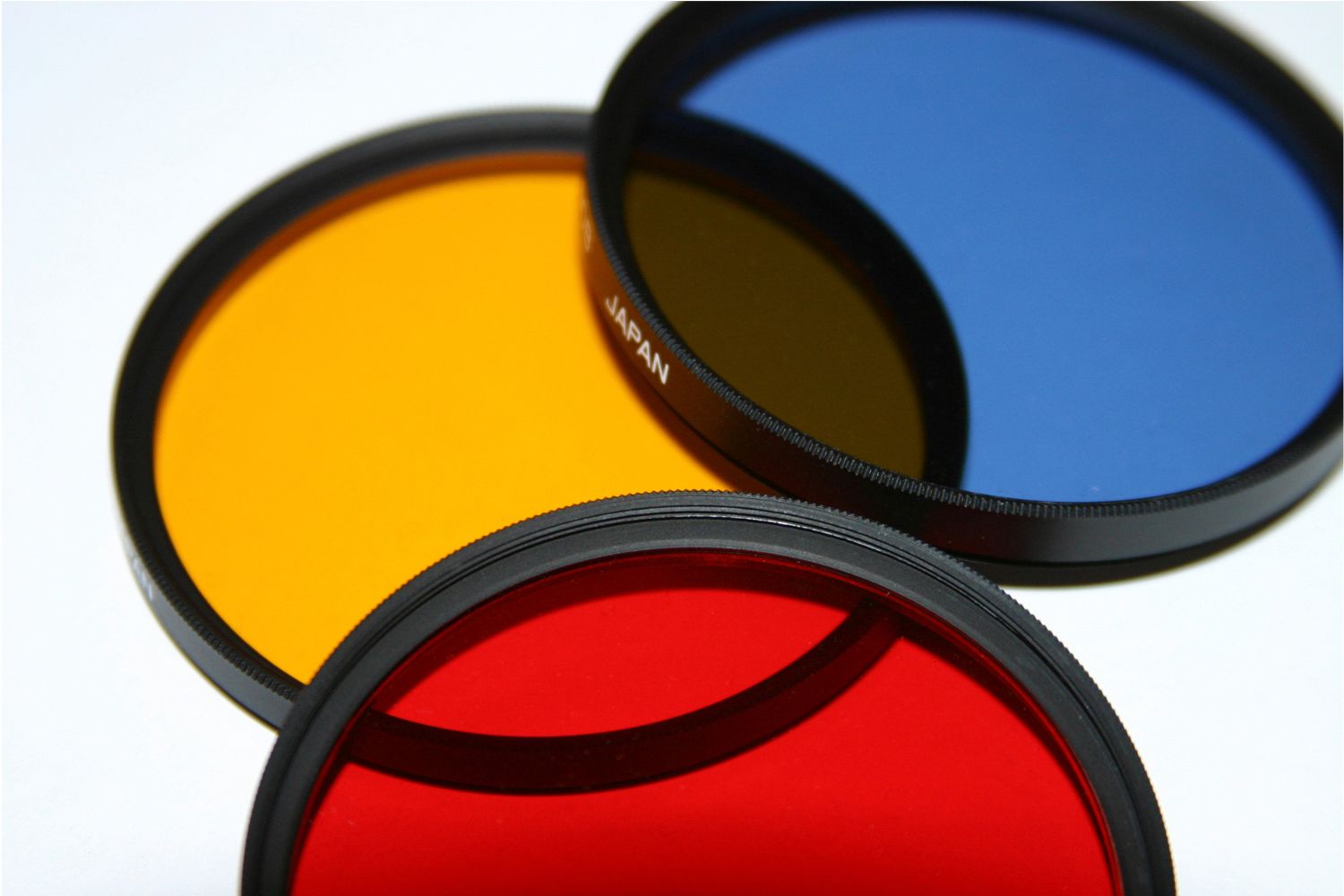
Colour filters for camera lens
Colour filters are used to modify the colour balance of images, adding creative effects or correcting colour casts. With the help of this camera lens filter type, you can enhance skin tones, correct colour temperature, or create some surreal effects. Nowadays, colour filters can be replicated digitally in a lot of cases. Nevertheless, they are still used in the black in white photography to manipulate tonal contrast and add mood to the photos. For example, a red filter darkens blue skies and enhances cloud contrast, creating dramatic landscapes.
Another field of their application is underwater photography. Colour filters can help restore natural colour balance and enhance the vibrancy of underwater scenes. For example, a red filter can counteract the blue-green tint of water at depth, revealing true-to-life colours in coral reefs and marine life.
When to use: black and white, underwater photography.
Discover our filters for underwater photography
Special effect lens filters
Special effect filters are the ones that let your creativity rule. With their help, you can add artistic elements to your photos and get some interesting effects. Here are some of the camera filter types for special effects:
- Infrared filter: Converts visible light into infrared wavelengths, resulting in surreal, ethereal images with significant tonal shifts and atmospheric effects.
- Black mist filter: Softens highlights and enhances contrast, creating a dreamy, romantic atmosphere with a soft-focus effect.
- Starburst filter: Adds star-shaped flares to light sources, such as streetlights or the sun, creating a cinematic effect.
- Astro neutral filter: Reduces light pollution in astrophotography, allowing to capture clear, detailed images of starry night skies.
Overview of all camera lens filter types
|
Filter
|
Effect |
| UV filter | Protects camera lens |
| Polarising filter | Reduces glare and reflections, enhances colours and contrast |
| ND filter | Reduces the light reaching camera sensor, creates motion blur effect and shallow depth of field |
| GND filter | Balances exposure between bright sky and dark foreground |
| Colour filter | Changes colour temperature, enhances specific type of colour |
| Infrared filter | Allows infrared light to enter camera sensor, creates surreal photos |
| Black mist filter | Creates a soft-focus dreamy effect |
| Starburst filter | Adds star flares to light sources |
| Astro neutral filter | Reduces light pollution to capture clear night skies |
Different materials of lens filters
Lens filters are typically made of high-quality optical glass or resin. While resin filters are cheaper, they might not have the same image clarity as the filters made of optical glass. Modern optical glass filters do not degrade image quality and are made in a lot of cases of tempered glass that is shockproof. Some filters may also feature multi-coating to reduce reflections and improve light transmission, enhancing overall performance.
Kase filters are made of high-quality optical glass that is shock-resistant and has nano-coating for easy cleaning.
Read more about glass and resin filters
How to choose the right filter: step-by-step instructions
- Identify your photography needs: Think of specific shooting scenarios you have and effects you would like to achieve. Choose the filter type that will help to overcome challenges in those shooting conditions.
- Choose the filter size: Ensure that the filter size matches the diameter of your lens's filter thread or that the filter is compatible with your lens's filter holder system. If you plan to use it with multiple lenses, choose the size that matches the biggest lens.
- Check the options!
Not sure which camera lens filter you need out of all different types? Ask our experts for advice!












